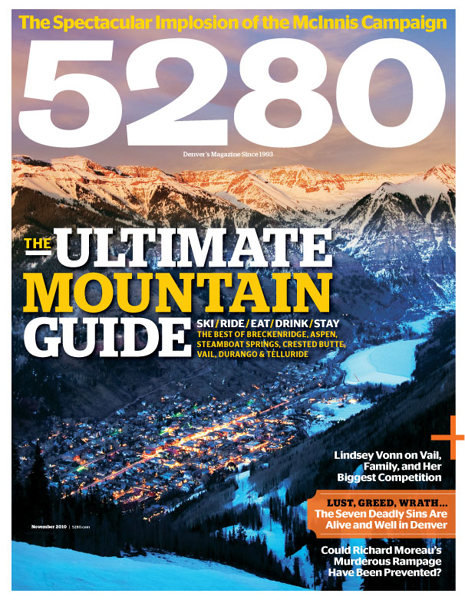The Local newsletter is your free, daily guide to life in Colorado. For locals, by locals.
We usually don’t think twice about hopping on that new high-speed quad and beelining it to the virgin backside for some turns—which makes it easy to forget the perpetual drain on the surrounding forests and wildlife. As long as demand continues, however—the ski industry generates a whopping $2.6 billion a year for Colorado’s economy—ski operations will keep tapping natural resources. “We need to raise the question: Where is it going to end?” says Mike Chiropolos, lands program director for Western Resource Advocates. “We’ve got enough ski terrain. We’ve got to draw the line somewhere.”
Curtailing the booming ski industry’s growth is unlikely in the near term, but resorts are working closely with the U.S. Forest Service to minimize their eco-impact. “Many ski areas exceed Forest Service requirements to reduce their environmental footprint,” says Maribeth Gustafson, USFS deputy regional forester, “and we applaud their efforts.” Although some ski behemoths, such as the four-mountain Aspen Skiing Company, are renowned for their progress in saving energy and fighting climate change, even those smaller ski areas that don’t get hoards of Front Range demand are taking steps—small though they might be—to increase their environmental responsibility. Here, three resorts that are doing what they can to troubleshoot their inevitable footprints.
- THE ISSUE Last year, Durango wanted to increase the mountain’s total skiable acreage by 10 percent, which would certainly impact fish and wildlife habitats by way of forest destruction.
- THE STRATEGY A “lop and scatter” method required workers to cut only dead and hazardous timber with hand tools and chainsaws. They also left felled trees on the forest floor, eliminating the need for obtrusive, polluting equipment.
- THE RESULT 125 new acres of terrain, 1,200 vertical feet of steep tree-skiing, and intact wildlife habitats.
Durango Mountain Resort
- THE ISSUE The staff manages 26 buildings within a two-mile radius—typically, by driving a truck to conduct the smallest of tasks, such as changing lightbulbs. Those countless round-trips added up to a noticeable carbon footprint over a full season.
- THE STRATEGY Going electric. After purchasing two electric skier shuttles last year, the resort added a high-tech, snow-worthy electric bicycle to the maintenance fleet this year, easing the demand on gas-guzzling trucks.
- THE RESULT An expected savings of up to 7,000 vehicle miles each year— a drastic reduction in CO2 emissions.
Crested Butte Mountain Resort
- THE ISSUE Waste from resort restaurants was tipping the scales at the local Milner Landfill.
- THE STRATEGY During the 2009–10 ski season, the resort implemented a “zero waste initiative” at all dining establishments, which includes a recycling program and a composting effort— the goal is to lessen landfill output by 5 percent each year until zero waste is achieved. Bonus: The on-mountain staff is spreading the message beyond property lines; their first success was a countywide composting program.
- THE RESULT The landfill load decreased by 62 percent in the first year alone.









